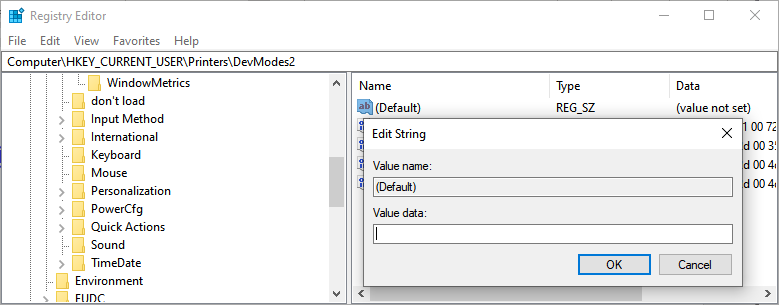You change information in the Registry by using the Registry Editor to change the contents of a value. Here's the simplest way to make your changes:
- Start the Registry Editor, as you normally would.
- Locate the value you want to change. (You can look for it manually by drilling down through keys and values or you can use the Find feature in the Registry Editor.)
- Either double-click the value name at the right side of the Registry Editor or highlight the value and press Enter. You'll see a dialog box that allows you to change the value's contents. (See Figure 1.)

Figure 1. The Registry Editor allows you to change Registry values.
- Make your changes, as desired.
- Click OK.
Remember that when you change values in the Registry, the effect of those changes may not be immediately apparent. In many cases, you'll need to restart Windows—and thereby force it to reload the Registry—in order to see the results of your change.
Author Bio
Allen Wyatt
With more than 50 non-fiction books and numerous magazine articles to his credit, Allen Wyatt is an internationally recognized author. He is president of Sharon Parq Associates, a computer and publishing services company. Learn more about Allen...
Converting Text to Numbers
Import information from a program external to Excel, and your numbers may be treated as text because of the way that the ...
Discover More
Limiting Entries to Numeric Values
When creating a worksheet, you may need to limit what can be entered into a particular cell. Using data validation, you ...
Discover More
Ignoring Case in a Comparison
Do you want Excel to take the case of your text into account when it does comparisons in a formula? The IF statement ...
Discover More
Importing a Portion of the Registry
Windows wouldn't function if it weren't for the Registry, and many system tweaks involve editing it. If you've exported a ...
Discover More
Editing the Windows Registry
The Registry is the central depository of configuration information used by Windows and by programs running on your ...
Discover More
Hiding Folders Under This PC
File Explorer is a virtual necessity when it comes to navigating the file system. If you find it a little too verbose, ...
Discover More

![]()
![]()
![]() This tip (10956) applies to Windows 7, 8, and 10.
This tip (10956) applies to Windows 7, 8, and 10.
Comments